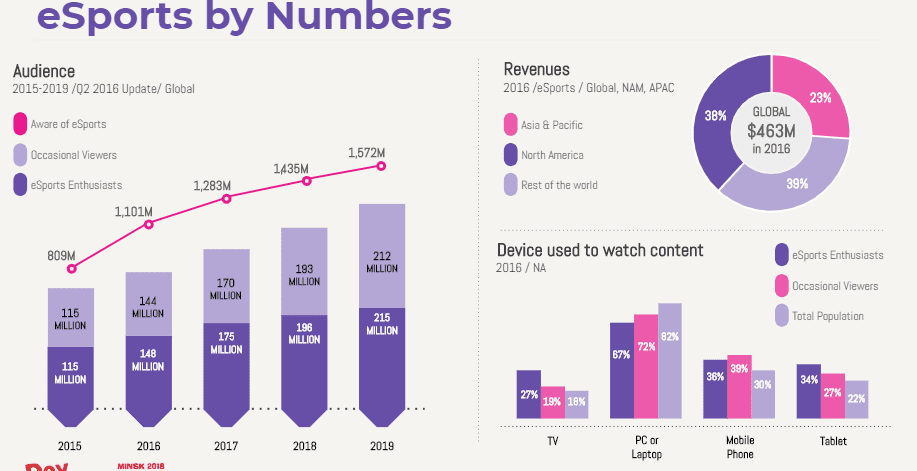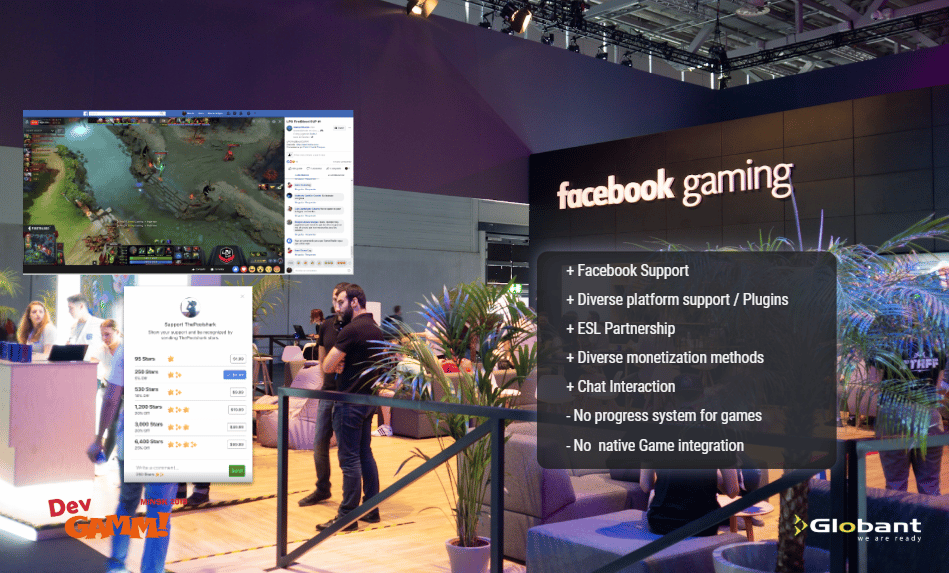In today’s eSports environment there is a complex network between video game developers, streaming technology companies, social networks, content creators, and spectators.
This rich environment offers new opportunities to collect information. This can be data about game performance, social interactions, the amount of content created, and quality.
This post aims to discuss the relationship between event organizers, game studios, players, and spectators. We’ll also get into how different experiences seek to increase engagement, data collection, and ultimately knowledge about different consumers. This will allow brands to tailor their strategy accordingly.
We’ll compare different elements of the current state of eSports events, using Twitch, YouTube gaming, and Facebook gaming. We will look into how those organizers and studios, players and spectators interact at ESL and tournament events.
Particularly events that are venue-based. Some people prefer venue-based events, which are like any gaming event but with the added interaction of different elements in the physical space.
We conducted research and tests on different games like Halo, EA Sports Games, and First Person Shooters (FPS; like Rainbow Six) looking at how organizations carried out these tournaments. We also look at the kind of feedback they received from spectators and pro-players. Here’s what we discovered.
Our Findings

A lot has evolved since the initial LAN party days. E-sports has formalized practices, and the market potential extends as far as we can see.
Something that caught my attention from the very early stages of eSports was the way that remote or venue-based events create a unique opportunity for different tribes. According to numbers provided by NewZoo, there’s a tremendous opportunity to create a unique environment. A chance to interact as never before.
The Events to Consider
On one side we have Twitch as the standard solution, which provides some level of interactivity in addition to the chat. It’s the platform used by default, both in streaming and eSports.
There’s also YouTube Gaming. Leveraging YouTube’s brand and technology, Google has set itself on a path to present solutions in this vertical.
And last but not least, we have Facebook Gaming. A few (years? months?) ago they secured a deal with ESL, but didn’t have the best start broadcasting live events on the platform.
Now, when all of these are combined, you get a venue-based event with the digital and physical altogether.
As we can see, these platforms aim to create a compelling experience for the spectator focusing mostly on content distribution. After that is solidified, then user interactions and interactivity come into the mix.
Analyzing the Elements of eSports
If you were to take a picture of the architecture at an eSports event (venue based with streaming), it might look something like this. At least this is our perspective of the current landscape.

Assuming the Event is the core that brought everyone together, then we have the GAME, created by the studio. The game has mechanics and properties related to the genre. Since we’re talking eSports games, they tend to be very balanced and pretty well designed. We can say the ProMeta of the game is used during these competitions (as well as scrim practices).
On top of this we have the players (pro/content creators), who are something like extreme users. They really stretch the previous mentioned properties and mechanics, they study, they practice, and so they become masters of these properties and mechanics.
Then there’s another group: the spectators. They could also be considered players, of course, but for purposes we’ll recognize how they play on what I would say is a more “normal” skill level; from really good to absolute noob (I fit in here). They attend these events not only to support whatever team or pro player they like, but also to learn more about the game.
Since noting the market potential —as well as the demographics of eSports consumers (mostly young adults, teens, and kids)—brands and companies have developed an interest in this discipline. And, as it happens with any other sport, they participate by sponsoring the events, pro teams, and even sometimes collaborate with studios and game developers to have branded content and items within the game itself.
This has created a unique environment, where different players have the opportunity to interact in a very particular way.
From the Status Quo to Studies
Now that we’ve seen the current state of eSports, let’s talk about some studies and investigations we’ve made across different game genres.
The first example is based on a very famous eSports FPS: Rainbow Six. Here we can see an enhanced (and somewhat overcrowded) UI concept showcasing more metadata information about the particular match, teams, and loadout. It also exhibits the possible interactions that spectators can have. The main one, especially in an FPS game, is managing which camera view you would like to see. It’s quite a simple, but very powerful choice.
The next example is focused on a mobile experience. Here we can keep the audience more informed, as well as providing real-time messaging, polls, quizzes, etc. This will engage the audience while also collecting and learning about the consumers’ demographics, tastes, etc.
The final example is kind of a futuristic one, although there are some solutions today. It’s focused on a VR environment that will react depending on the tournament or match properties. A classic example I always mention is we can shake and put your ship on fire if your team is not doing well. Testing this interaction on small tournaments gave us a lot of information about what people see, and perhaps more importantly, how they could feel a tournament.
A lot of this is possible because of the nature of videogames and integration among other systems. APIs as well as spectator technologies are a key design element of video games moving forward (cinematic cameras like RDR2, Photo mode like many games).
Amazing Times for Tech + Gaming
In a nutshell, we are living in amazing times. Spectating events like tournaments, event Skirmishes, and other types of events will evolve from simple flat-screen, one-way deals, into more fun, interactive experiences. This will, at the same time, influence and determine decision making on the part of gaming studios, event organizers, and brands alike.



